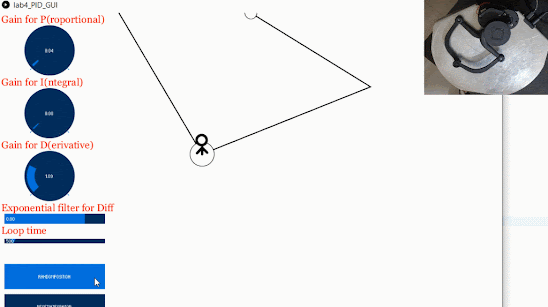L1 - CH501
This lab was done individually. In general, it was a fun activity, although it took a lot longer than anticipated due to the difficulty in finding certain objects I wanted. Though considered, I avoided use of fluids that would make a mess, so all of these are human actuated. Here's a random screenshot I took while working at the 'scrapyard':
1 mm:
I use a "series" of pegs for this one. A peg on its own, when squeezed, has a displacement of approximately 1 cm. By connecting the end of a smaller peg to the end of a slightly bigger peg and squeezing the handle of the smaller peg, the displacement of the bigger peg is slightly lower. For this particular combination, the displacement was approximately half a centimeter:
Using a larger peg, I was able to achieve a displacement of 1 mm:
It would have been nice to squeeze the peg handles via another mechanism, but the spring was quite stiff so the applied force needed to be high enough; one idea I had was to affix the bottom handle of the smaller peg (to e.g., a piece of wood) and wrap a band around the top handle, and attach weights at the bottom of the band to push the top handle of the peg downwards; I had no dense weights lying around nor was my band strong enough to withstand the tension applied, so I left it at that.
10 mm:
I created a fulcrum using a wooden block and a ruler, with the object to be actuated attached to one side via a thread and rubber band, and a weight on the other. The weight is just a toy mechanical car that pulls a rope. The car is on lower ground so that a higher portion of the applied force is generated by the vertical component. The pivot "point" is quite large, but still good enough to move the object by a centimeter. Another idea I had included attaching a bottle instead of the car, and varying the quantity of water, to act as a variable weight. Here, I pull the car, but it could be given an initial push from behind (without the carpet, ideally, to mitigate friction effects) to generate a similar effect.
100 mm:
Here's a sketch I made for this one:
I worked "backwards" to see how what type of "Rube Goldberg" machine I could craft in a reasonable amount of time with existing materials. The idea is that the ball attached to the pendulum, once released with the hand, strikes obj 1, which is sitting on a small platform. obj 1 then rolls down, striking obj 2, which falls off a table into the cup. Since the cup is connected to a pulley, it has to lift the counterweight on the other side. At first, obj 2 was cuboidal, but I switched to a cylinder once I realized rolling was necessary. obj 1 was also lightweight to minimize inertia. Weights were chosen such that the counterweight was lifted by approximately 10 cm. The implementation is extremely basic, and, unfortunately, I ran across several issues, such as the cup tilting on its own (in hindsight, attaching a thread to four equidistant points on the top part of the cup, as opposed to a single one at the center, could have helped with stability), finding reasonable weights, and proper space to "execute" the sketch. Nevertheless, it was a fun activity. The video unfortunately isn't the best, but you can see what's going on (I did not keep the camera affixed from afar since I did not want to include myself in the video).




Comments
Post a Comment